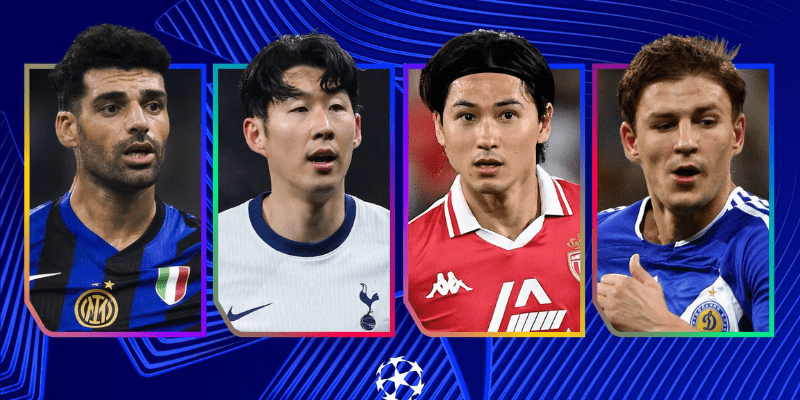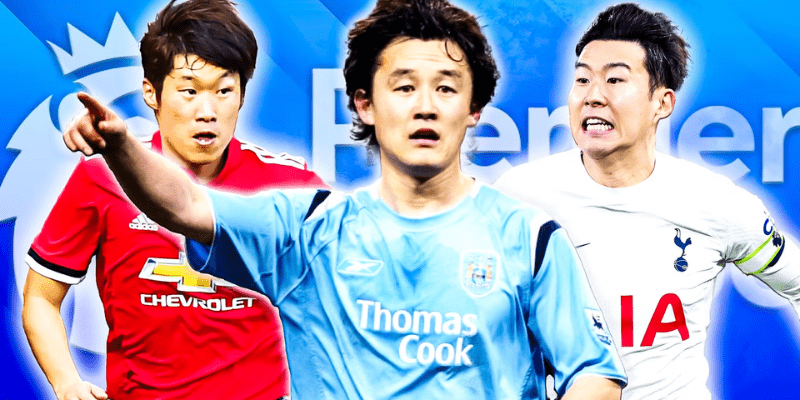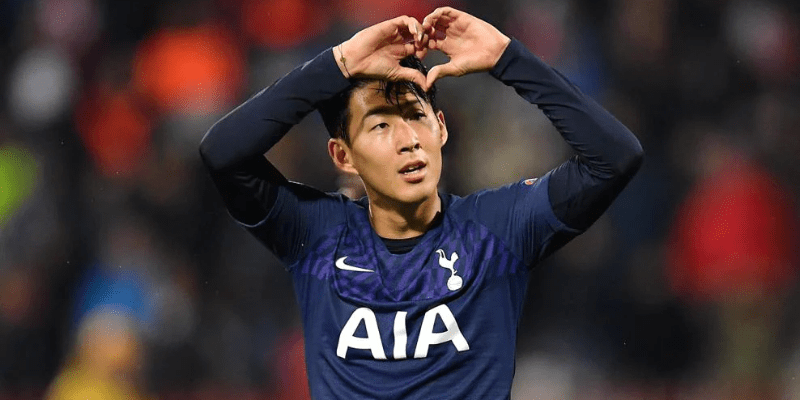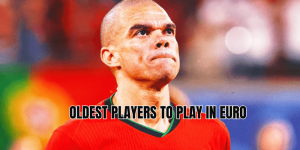In the shimmering lights of Europe’s greatest club competition, Asian players in UCL have often been overlooked. Yet their achievements—moments of brilliance, history-making milestones, and records shattered—deserve the spotlight. In this article, KorKick takes you on an immersive journey through the history, the legends, and the rising talents: how Asian players have shaped the UEFA Champions League, and where they stand today.
The early pioneers and historic firsts

Long before the modern influx of global talent, a handful of Asian players blazed trails in Europe. Their feats—some quietly recorded, others loudly celebrated—set the stage for future generations.
- Park Ji-sung is arguably the most iconic early Asian in the UCL era. He became the first Asian footballer to appear in a UEFA Champions League final (2011, Manchester United vs. Barcelona) and the first to win the title with United in 2008 (though he did not feature in the final).
- Another name worth noting is Bum-Kun Cha (South Korea), who in 1980 became the first Asian to participate in and win a major European club competition (the UEFA Cup). While not strictly UCL (then European Cup) success, it still marked a breakthrough on European soil.
- The path was far from easy: in earlier decades, Asian players faced cultural, logistical, and scouting obstacles. Yet every step mattered—for visibility, for respect, for belief in what was possible.
Those first steps laid a foundation. And over the decades that followed, Asian players gradually increased their presence in UCL rosters, group stages, and knockout ties.
Records and rankings: Who tops among Asians
When it comes to Asian players in UCL, some names dominate the statistics. Let’s break down the key records:
Most appearances by an Asian in UCL
The record for the most UCL appearances by an Asian is held by Son Heung-min, with 55 matches played in the Champions League (from group stage to final). This gives him the edge over the legendary Park Ji-sung (54 appearances).
Another notable competitor is Maksim Shatskikh (from Uzbekistan), who collected 45 appearances in the competition.
Other frequent names in the appearance rankings include Shinji Kagawa, Mehdi Taremi, Yuto Nagatomo, and South Korea’s Kim Minjae.
Top goalscorers among Asian players
In terms of pure scoring, Son Heung-min again leads the pack. He has scored 19 goals in UCL matches, surpassing others such as Mehdi Taremi and Sardar Azmoun.
Interestingly, Son became the top Asian scorer in Champions League history when he overtook former Dynamo Kyiv star Shatskikh.
Other names appearing in Asian goalscoring charts include Takumi Minamino, Yuto Nagatomo, Keisuke Honda, and Ali Daei, though in more modest totals.
Other notable statistical feats
- Son Heung-min, beyond goals and appearances, holds the distinction of being Asia’s top scorer and among the most consistent Asian performers in Europe’s top clubs.
- Mehdi Taremi has pushed the envelope, especially in recent seasons, with clutch performances in group and knockout matches for Porto and later Inter Milan.
- Lee Kang-in (South Korea) made history by becoming only the second Asian ever to receive a UEFA Champions League medal, following Park Ji-sung. His rise at Paris Saint-Germain has drawn attention to how newer talents can now break into this elite bracket.
Spotlight on legends: Son Heung-min, Taremi, Minamino, Lee Kang-in

Let’s zoom into some of the standout Asian names in UCL history—how they got there, what they achieved, and why they matter.
Son Heung-min – The standard bearer
Son’s story is one of perseverance, consistency, and all-round quality. He first entered European football. Over more than a decade in England’s top flight, he became a talismanic forward: pacey, clinical, two-footed, and creative.
In the Champions League, his 55 appearances and 19 goals put him at the summit among Asian players. He has scored in group and knockout matches, often in high-pressure scenarios. He remains the benchmark for Asian talent in Europe’s elite competition.
Mehdi Taremi – Iran’s modern UCL star
Taremi has carved a distinct path, especially in recent years. His move to Inter Milan in 2024 made him only the second Iranian to join the Milan giants.
He made headlines by delivering a decisive assist in extra time during the UCL semi-final against Barcelona, helping Inter reach the final. Over his UCL career, Taremi has scored 11 goals across 39 appearances, placing him among the top Asian scorers. His performances underline that Asian forwards are increasingly capable of influencing outcomes on Europe’s grandest stage.
Takumi Minamino – Japanese finesse
Minamino’s UCL journey is a study in adaptability. Having played for Red Bull Salzburg, Liverpool, Monaco, and now other European sides, he brings technical quality, movement, and versatility. His contributions often come in support roles, yet they shift the balance.
He has appeared around 20–30 times in UCL matches and is frequently cited among Asia’s top performers in European competition.
Lee Kang-in – Rising new icon
Lee is a symbolic bridge to the new generation. The PSG attacking midfielder made his name in Spain’s youth ranks, and then moved to Paris, where he scored his first UCL goal in a win over AC Milan.
In 2025, as PSG lifted the Champions League, Lee became the second Asian ever to receive a winners’ medal—only Park Ji-sung had done so before him. Though his playing time has varied, Lee’s trajectory reminds us that Asian stars in UCL are no longer rare anomalies—they are part of the competitive fabric.
Why Asian players in UCL matter—beyond numbers

The presence of Asian players in UCL is more than stat fodder. Their stories carry significance across multiple dimensions:
- Representation and inspiration: Young players in Asia see role models not just in local leagues but on Europe’s biggest stage.
- Scouting trends: Clubs across Europe are scouting dee.
- Tactical and positional diversity: Many Asian players aren’t just forwards; we see midfield creators, fullbacks, defensive solidity, playmakers.
- Bridging football cultures: Their success helps build footballing bridges, encouraging exchange of ideas, coaching, youth development, and international collaboration.
Challenges and future outlook
Even as Asian players gain more footholds in UCL, barriers remain:
- Competition for spots: In elite squads, breaking into starting XI is tough—Asian players often rotate or serve as backups.
- Visibility and adaptation: Language, culture, climate, and tactical adaptation are non-trivial for players relocating far.
- Perception and bias: Earlier bias against “non-European” players still lingers faintly. Some clubs remain cautious about fully trusting Asian stars in big matches.
Yet the momentum is positive. Promising younger names—, Uzbekistan—are getting opportunities, experience, and club support. We may see the first Asian UCL top scorer (overall) in the coming decade, or an Asian player lifting the trophy while starring in a final.
Conclusion
Asian players in UCL have transcended being novelty names: they are vital contributors, record setters, and beacons for future talent. From Park Ji-sung’s trailblazing finals to Son Heung-min’s scoring supremacy, from Taremi’s clutch assists to Lee Kang-in’s emerging star, their stories map a journey of progress, perseverance, and pride.
If you want to dive deeper—say, “Top 10 Asian scorers in UCL history,” “Asian defenders in Champions League,” or “Upcoming Asian talents set to star in Europe”—just tell KorKick, and we’ll follow the ball together.






